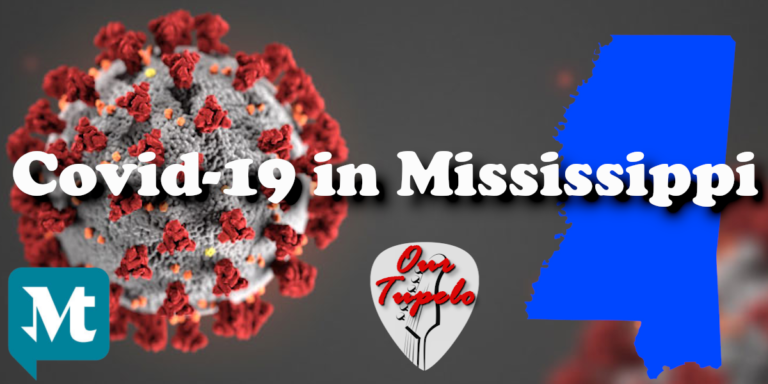
by Erica Hensley, Mississippi Today
April 14, 2020
Anna Wan has built a career out of making math come alive. The assistant professor and self-described tinkerer at University of Southern Mississippi has just pivoted from hands-on math labs for future teachers and students alike, to medical mask-making. The common thread: her 3D printer and duel “makers” hub-research lab in Hattiesburg.
For the Inform[H]er newsletter, Mississippi Today spoke with Wan last week about her approach to getting creative during a pandemic that led to a new medical mask innovation, as she was driving around town delivering said new masks to Forrest General Hospital and the Hattiesburg Clinic. Like many innovations, her design was partly due to chance and a hunch at 2 in the morning.
Upshot: She’s a “math licensure” faculty member at USM, meaning she teaches future math teachers. Her motto about teaching through making (and the perfect pivot to mask-making): “What other way to make it more real than to actually have the tools to make the precise thing that you want to make and make math come alive.”
Her team has made at least 1,600 masks in a few weeks (from initial concept to prototype to first product) that have been sent directly to health care workers on the front lines in Hattiesburg. Asked about full capacity production, she says the team is making one mask per two minutes per machine currently with three machines, adding, “You do the math.”
This piece was originally published in the Inform[H]er and updated with new information this week.
Q: What is your background that you were able to pivot so well and quickly to pandemic mask-making?
A: Part of my research is incorporating digital fabrication (laser cutting, 3D printing) into teaching mathematics, because what other way to make it more real than to actually have the tools to make the precise thing that you want to make and make math come alive. So, a lot of my work is to take some of the maker-constructivist activities into a formal education and tying it to the standard so that kids can learn creatively without loss of time, both teacher preparation and classroom time — we know that education doesn’t occur in isolation.
I’ve always done kind of crazy things. My husband is in a wheelchair and wheelchair attachments are pretty customized to the wheelchair user. I’ve also had a 3D printer since 2015, and I created an education makerspace (a workshop that encourages hands-on learning) at my previous institution at Columbus State in Columbus, Georgia. I’ve always done these tinkering kind of things — I was always fabricating something for somebody somewhere somehow.
Q: How did you end up pivoting to this mask? (Editor’s note: the mask is simply the device to attach medical-grade anti-viral filters to health care workers’ faces. The hospitals she has partnered with already have the actual filter with a nozzle. The idea to strap the filter to the face with a mask was a brainchild of a quick conversation with medical professionals. Hospitals are low on disposable N95 masks due to supply chain chokes across the country. She’s working with Mississippi Polymer Institute to source more scalable, sustainable plastics. They’re currently using the same soft plastic of Coke bottles.)
A: We looked at thermoforming as a way to make a mold for something else — you heat up a sheet of plastic and you form it over your mold. (Also good for cookie and chocolate molds, she says). So I thought we would thermoform over this mask into a solid brick of this mask sheet and I’ll create plaster molds or something to pour silicone in.
That was the original intent — this was an intermediary step to make something harder to push plastic through. But, after I thermoformed it and cut the shape out, I put it to my face. I was testing it for the suction to my face — when you test a mask for suction you take a deep breath — it stuck me right away and I choked. It was that good of a suction to the face and I thought, ‘Wait, this could be a final product!”
We’ve also published it for people to recreate on their own, and local sewers have sewed and contributed straps for the masks.
Q: What does this moment mean to you as an innovator and what lessons can we take away from it?
A: I honestly hate the backdrop in which this is occurring because it’s really an exciting time in a sense that this is a global hackathon. It’s really cool and a really exciting time to create, if it weren’t for the virus. I’m seizing the moment to create things and, honestly, I feel like the N95 mask really needed to be rethought. (Editor’s note: The N95 mask is not made for all-day, repeat wear, unlike Wan’s. With N95s, breaths in and out are dispersed throughout the entirety of the mask, where as with hers, the breath in and out is channeled through that spout so you get a fuller breath in and a fuller breath out, and there’s not as much as the C02 build up.)
We have to rethink the way we’re using these N95s. Just by purely stating that 3M is going to ramp up production of these things, I don’t know that that is necessarily helpful (for the long-term), especially in this day and age of the fact that these are so disposable.
See more about the mask and Wan’s work here: https://www.eaglemakerhub.org/hubmask/
This article first appeared on Mississippi Today and is republished here under a Creative Commons license.
- ‘Will you trust us?’: JPS plan for stricter cellphone policy makes some parents anxious - July 11, 2025
- Glendora water not tainted by benzene after train derailment, health agency says - July 11, 2025
- Years behind nearby states, Mississippi struggles to finalize opioid settlement distribution process - July 11, 2025